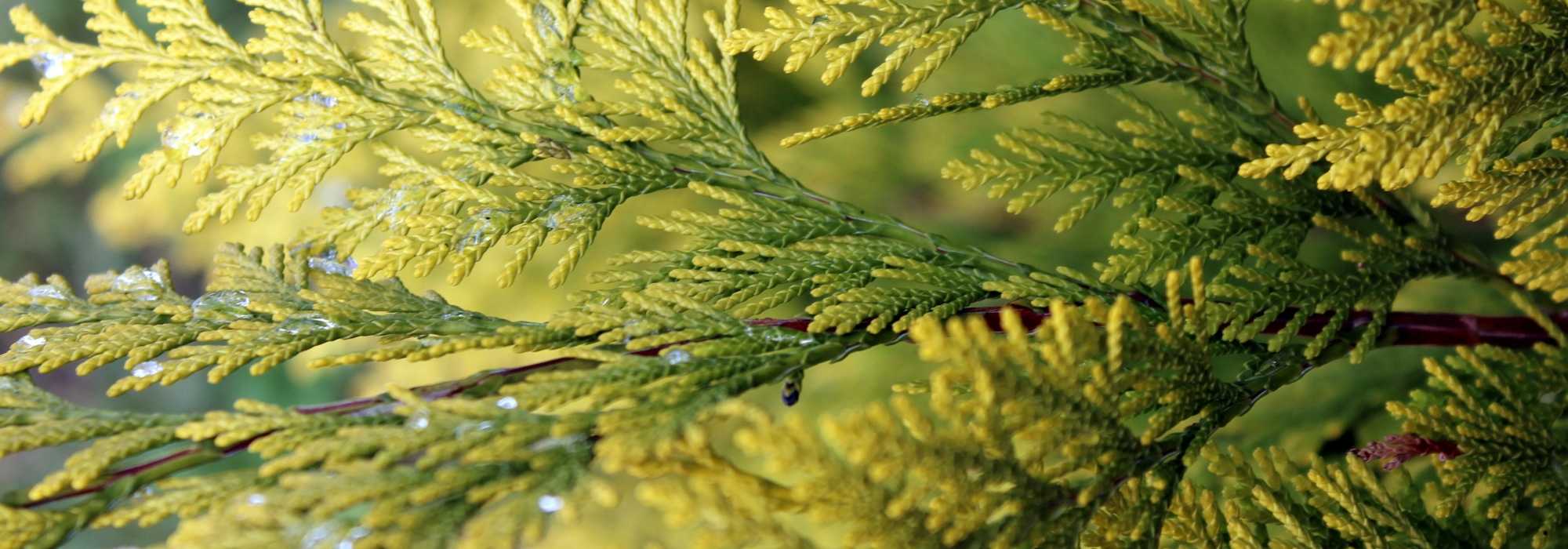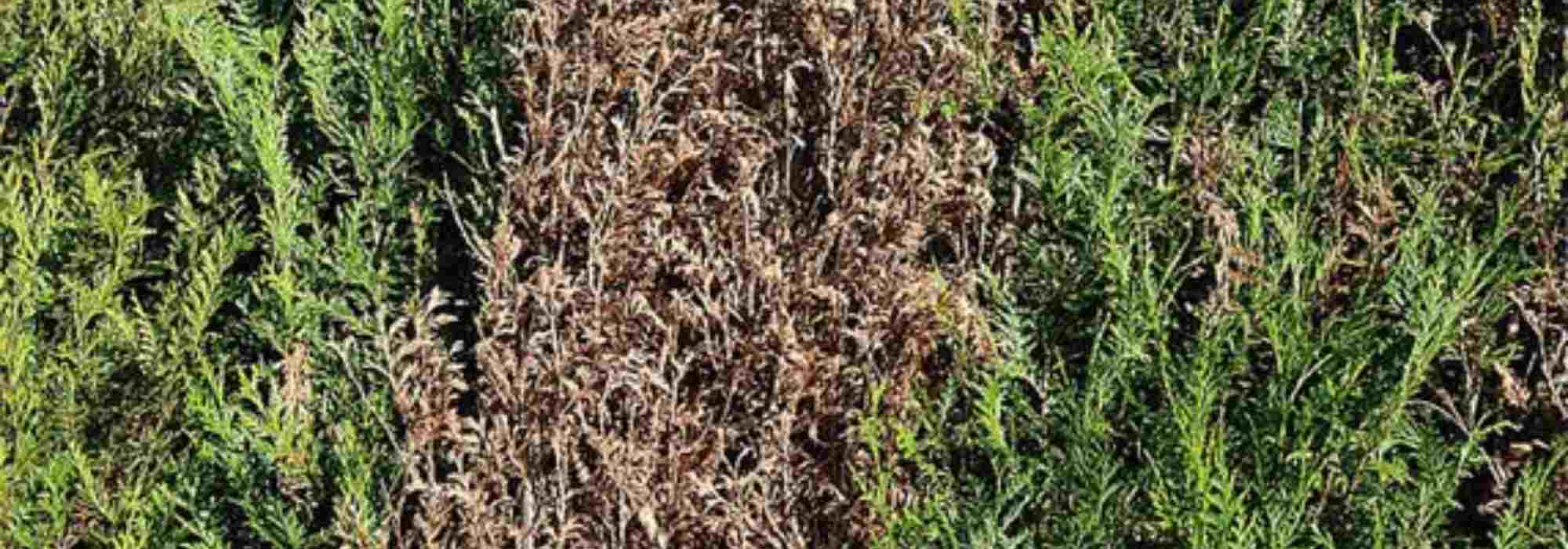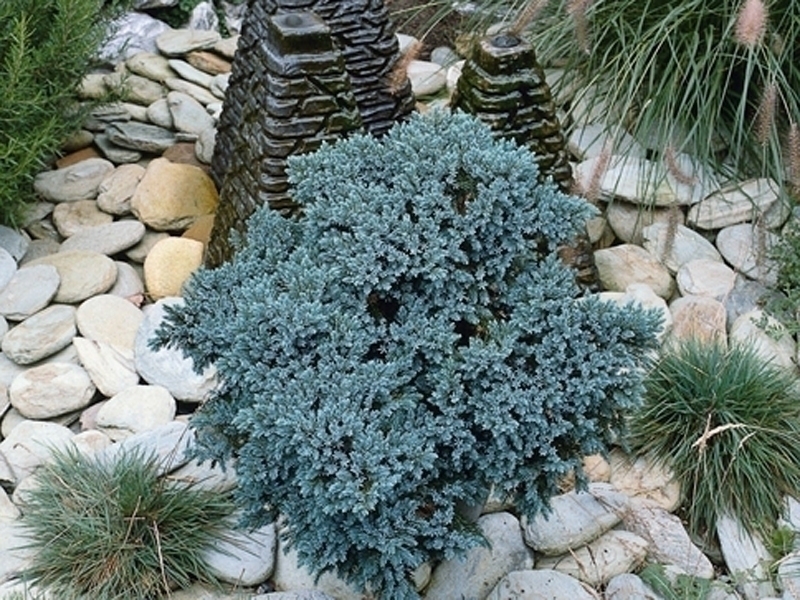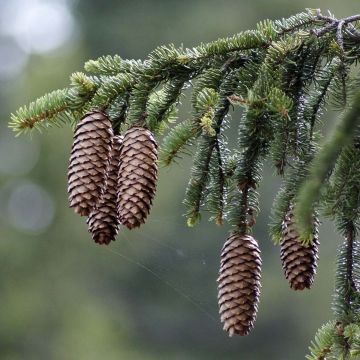

Thuja plicata Can-can - Western Red Cedar
Thuja plicata Can-can - Western Red Cedar
Thuja plicata Can-can
Western Red Cedar, Pacific Red Cedar, Giant Red Cedar
Special offer!
Receive a €20 voucher for any order over €90 (excluding delivery costs, credit notes, and plastic-free options)!
1- Add your favorite plants to your cart.
2- Once you have reached €90, confirm your order (you can even choose the delivery date!).
3- As soon as your order is shipped, you will receive an email containing your voucher code, valid for 3 months (90 days).
Your voucher is unique and can only be used once, for any order with a minimum value of €20, excluding delivery costs.
Can be combined with other current offers, non-divisible and non-refundable.
Home or relay delivery (depending on size and destination)
Schedule delivery date,
and select date in basket
This plant carries a 24 months recovery warranty
More information
We guarantee the quality of our plants for a full growing cycle, and will replace at our expense any plant that fails to recover under normal climatic and planting conditions.
Would this plant suit my garden?
Set up your Plantfit profile →
Description
The Thuja plicata Can-Can is a compact form of the giant Californian Thuja. It forms a very regular cone of beautiful dark green, which brightens up with white tips when young shoots appear. Highly hardy, only fearing arid conditions, this highly adaptable conifer adjusts to most soils. It is well suited to small gardens, planted in isolation, in rockeries or associated with other dwarf conifers. Requiring no other maintenance except for some watering in summer, this Thuja is an ideal plant for beginners in the garden.
The Thuja plicata, also known as the Giant Thuja or Western Redcedar, is sometimes called Western Redcedar or Lobb's Thuja. It is an evergreen conifer of the Cupressaceae family native to the northwest of North America, particularly northern California. In its natural environment, this giant reaches a height of 50 or 60 m (164 or 196 ft 11 in) and can develop a trunk with a diameter of 3 m (9 ft 10 in) when it reaches the end of its existence at around 700 years old. It has long been exploited for its soft and durable wood, known in Europe as 'Red cedar'. This conifer reigns in the depths of lush forests, but also descends to the banks of rivers or colonizes swampy forests. It is a shade-adapted species, even thick shade, and it loves moisture. The dwarf and reduced forms are more water-efficient.
The 'Can-Can' variety, perfectly original, is distinguished by its small size and its well-conical habit , with a crown carried by a single trunk. Its growth is slow, so that it reaches maturity (after about 20 years) 2.50 m in height and 1.50 m (4 ft 11 in) in spread At this size, its growth stops, making it a low-maintenance hedge plant provided you are patient, given its slow growth! Its evergreen leaves are dark green on the upper side, lighter, even white on the lower side. The dense foliage is articulated around branchlets made up of small imbricate scale leaves. When the young shoots lengthen, their tips have a white shade that stands out well against the dark mass of foliage, giving it a more decorative appearance than usual. The insignificant flowering takes place in March and produces small brown cones that ripen in August. Its brown-red bark is traversed by cracks. This small-sized conifer is very hardy (down to -25 °C). Not very sensitive to insects or diseases, it requires no other maintenance and does not need pruning due to its perfect shape.
The 'Can-Can' Thuja is probably not the most beautiful compact conifer, but its ease of cultivation and its beautiful appearance throughout the year deserve a place in a bed, or even in isolation in a small garden. It will also be well suited to a rockery, provided the soil is not arid. Its very graphic habit makes it a good plant for contemporary gardens that value typical forms. It will be well accompanied by other colourful or unusually shaped conifers, such as the Chamaecyparis pisifera Boulevard, a slow-growing miniature conifer of the same size, with both its irregular and tousled appearance and its blue-gray colour tinged with purple in winter standing out from the well green conical appearance of our small Thuja. The Abies koreana Silberlocke with its pyramidal habit and its curious well-curved needles or the Picea pungens Glauca Globosa with its extraordinary blue livery and its irregular large cushion-like aspect will also be good companions.
Thuja plicata Can-can - Western Red Cedar in pictures


Plant habit
Foliage
Botanical data
Thuja
plicata
Can-can
Cupressaceae
Western Red Cedar, Pacific Red Cedar, Giant Red Cedar
Cultivar or hybrid
Other Thuya - Thuja
View all →Planting and care
The 'Can-Can' Vine-Plant (Thuja plicata 'Can-Can') should be planted from September to November and from February to April in deep, ordinary but loose and not too heavy soil. It accepts most soil types, close to neutrality, moderately acidic or even slightly calcareous, but retaining some freshness. This variety indeed fears prolonged droughts. Its preference is for humus-rich soils. It will thrive in a sunny or semi-shaded exposure. Soak the root balls in a bucket of water before planting. Optionally, add organic amendment to the planting hole and water generously in the first years, and in case of prolonged drought. In very poor soil, you can apply a special conifer fertilizer every year in April, and cultivate the soil in summer. This hardy conifer (up to -25°C (-13 °F) at least) does not require pruning.
Planting period
Intended location
Care
Planting & care advice
This item has not been reviewed yet - be the first to leave a review about it.
Similar products
Haven't found what you were looking for?
Hardiness is the lowest winter temperature a plant can endure without suffering serious damage or even dying. However, hardiness is affected by location (a sheltered area, such as a patio), protection (winter cover) and soil type (hardiness is improved by well-drained soil).

Photo Sharing Terms & Conditions
In order to encourage gardeners to interact and share their experiences, Promesse de fleurs offers various media enabling content to be uploaded onto its Site - in particular via the ‘Photo sharing’ module.
The User agrees to refrain from:
- Posting any content that is illegal, prejudicial, insulting, racist, inciteful to hatred, revisionist, contrary to public decency, that infringes on privacy or on the privacy rights of third parties, in particular the publicity rights of persons and goods, intellectual property rights, or the right to privacy.
- Submitting content on behalf of a third party;
- Impersonate the identity of a third party and/or publish any personal information about a third party;
In general, the User undertakes to refrain from any unethical behaviour.
All Content (in particular text, comments, files, images, photos, videos, creative works, etc.), which may be subject to property or intellectual property rights, image or other private rights, shall remain the property of the User, subject to the limited rights granted by the terms of the licence granted by Promesse de fleurs as stated below. Users are at liberty to publish or not to publish such Content on the Site, notably via the ‘Photo Sharing’ facility, and accept that this Content shall be made public and freely accessible, notably on the Internet.
Users further acknowledge, undertake to have ,and guarantee that they hold all necessary rights and permissions to publish such material on the Site, in particular with regard to the legislation in force pertaining to any privacy, property, intellectual property, image, or contractual rights, or rights of any other nature. By publishing such Content on the Site, Users acknowledge accepting full liability as publishers of the Content within the meaning of the law, and grant Promesse de fleurs, free of charge, an inclusive, worldwide licence for the said Content for the entire duration of its publication, including all reproduction, representation, up/downloading, displaying, performing, transmission, and storage rights.
Users also grant permission for their name to be linked to the Content and accept that this link may not always be made available.
By engaging in posting material, Users consent to their Content becoming automatically accessible on the Internet, in particular on other sites and/or blogs and/or web pages of the Promesse de fleurs site, including in particular social pages and the Promesse de fleurs catalogue.
Users may secure the removal of entrusted content free of charge by issuing a simple request via our contact form.
The flowering period indicated on our website applies to countries and regions located in USDA zone 8 (France, the United Kingdom, Ireland, the Netherlands, etc.)
It will vary according to where you live:
- In zones 9 to 10 (Italy, Spain, Greece, etc.), flowering will occur about 2 to 4 weeks earlier.
- In zones 6 to 7 (Germany, Poland, Slovenia, and lower mountainous regions), flowering will be delayed by 2 to 3 weeks.
- In zone 5 (Central Europe, Scandinavia), blooming will be delayed by 3 to 5 weeks.
In temperate climates, pruning of spring-flowering shrubs (forsythia, spireas, etc.) should be done just after flowering.
Pruning of summer-flowering shrubs (Indian Lilac, Perovskia, etc.) can be done in winter or spring.
In cold regions as well as with frost-sensitive plants, avoid pruning too early when severe frosts may still occur.
The planting period indicated on our website applies to countries and regions located in USDA zone 8 (France, United Kingdom, Ireland, Netherlands).
It will vary according to where you live:
- In Mediterranean zones (Marseille, Madrid, Milan, etc.), autumn and winter are the best planting periods.
- In continental zones (Strasbourg, Munich, Vienna, etc.), delay planting by 2 to 3 weeks in spring and bring it forward by 2 to 4 weeks in autumn.
- In mountainous regions (the Alps, Pyrenees, Carpathians, etc.), it is best to plant in late spring (May-June) or late summer (August-September).
The harvesting period indicated on our website applies to countries and regions in USDA zone 8 (France, England, Ireland, the Netherlands).
In colder areas (Scandinavia, Poland, Austria...) fruit and vegetable harvests are likely to be delayed by 3-4 weeks.
In warmer areas (Italy, Spain, Greece, etc.), harvesting will probably take place earlier, depending on weather conditions.
The sowing periods indicated on our website apply to countries and regions within USDA Zone 8 (France, UK, Ireland, Netherlands).
In colder areas (Scandinavia, Poland, Austria...), delay any outdoor sowing by 3-4 weeks, or sow under glass.
In warmer climes (Italy, Spain, Greece, etc.), bring outdoor sowing forward by a few weeks.



























































